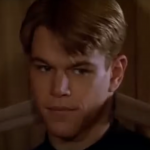 Weird Stuff
Weird Stuff  Weird Stuff
Weird Stuff  Our World
Our World 10 Ways Your Christmas Tree Is More Lit Than You Think
 Movies and TV
Movies and TV The 10 Coolest Stars to Set Sail on The Love Boat
 History
History 10 Things You Didn’t Know About the American National Anthem
 Technology
Technology Top 10 Everyday Tech Buzzwords That Hide a Darker Past
 Humans
Humans 10 Everyday Human Behaviors That Are Actually Survival Instincts
 Animals
Animals 10 Animals That Humiliated and Harmed Historical Leaders
 History
History 10 Most Influential Protests in Modern History
 Creepy
Creepy 10 More Representations of Death from Myth, Legend, and Folktale
 Technology
Technology 10 Scientific Breakthroughs of 2025 That’ll Change Everything
 Weird Stuff
Weird Stuff Ten Bizarre Facts About The Doge Meme
 Our World
Our World 10 Ways Your Christmas Tree Is More Lit Than You Think
 Movies and TV
Movies and TV The 10 Coolest Stars to Set Sail on The Love Boat
Who's Behind Listverse?

Jamie Frater
Head Editor
Jamie founded Listverse due to an insatiable desire to share fascinating, obscure, and bizarre facts. He has been a guest speaker on numerous national radio and television stations and is a five time published author.
More About Us History
History 10 Things You Didn’t Know About the American National Anthem
 Technology
Technology Top 10 Everyday Tech Buzzwords That Hide a Darker Past
 Humans
Humans 10 Everyday Human Behaviors That Are Actually Survival Instincts
 Animals
Animals 10 Animals That Humiliated and Harmed Historical Leaders
 History
History 10 Most Influential Protests in Modern History
 Creepy
Creepy 10 More Representations of Death from Myth, Legend, and Folktale
 Technology
Technology 10 Scientific Breakthroughs of 2025 That’ll Change Everything
10 Psychological Thrillers From The ’80s That Make Us Miss The Analog Creep Factor
The 1980s were truly a golden era for psychological thrillers, with a distinctive brand of suspense that today’s digital-heavy films just can’t seem to match. There’s something deeply unsettling about the analog aesthetics of these movies, those grainy film stocks that somehow made shadows look deeper, practical special effects that felt genuinely disturbing, and that methodical pacing that let dread build up naturally. Before CGI took over everything, directors had to rely on clever camera work, actual physical props, and real environmental ambiance to create tension that really got under your skin. These weren’t just scary movies; they were psychologically immersive experiences that actually used the limitations of ’80s technology to their advantage, ramping up that feeling of isolation and paranoia.
10Blow Out (1981)
The whirring of tape recorders and reel-to-reel obsession takes center stage in Brian De Palma’s criminally underappreciated gem. Blow Out follows sound guy Jack Terry (John Travolta) who accidentally records audio evidence of a murder while grabbing sound effects for a low-budget horror flick. What makes this film so brilliant is how it celebrates analog technology, oscilloscopes, magnetic tape, film projectors, all becoming tools in Jack’s increasingly desperate investigation. De Palma builds a gripping atmosphere of paranoia as Jack obsessively analyzes and tweaks his recordings, essentially creating a love letter to the analog processes of filmmaking itself. The film shows how outdated tech can actually become the perfect vehicle for suspense, as the physical limitations of these devices, having to rewind, the quality loss in copies, the fragility of the evidence, become plot points that crank up the tension.
9Videodrome (1983)
Body horror meets VHS-era paranoia in David Cronenberg’s ultimate analog mind-melt. Videodrome follows a TV executive who stumbles onto a mysterious broadcast signal that causes hallucinations and eventually physical transformations. The film’s unforgettable imagery, a pulsating, breathing VHS tape; a television with veins; a stomach cavity that accepts videocassettes, taps into the anxieties of a society just starting to deal with media overload. What makes Videodrome so effective is how it transforms analog technology into something organic and threatening. The grainy broadcast signal, static-filled TV screens, and physical degradation of videotape all become vehicles for horror that feel impossibly tangible. Cronenberg’s vision of technology literally merging with flesh remains one of cinema’s most disturbing explorations of media consumption, made all the more effective by practical effects that actually make you believe in the horrifying transformation.
8The Dead Zone (1983)
Cronenberg strikes again, this time tackling Stephen King with an eerie quietness and cold film grain that perfectly captures the bleakness of both the story and the New England winter. The Dead Zone stars Christopher Walken as Johnny Smith, a man who wakes up from a coma with psychic abilities that kick in whenever he touches someone. The film’s analog creep factor comes from its restrained approach, Johnny’s visions appear as disruptions in reality rather than flashy special effects. His premonitions often come through as polaroid-like flashes, giving them a disturbing immediacy and tactile quality. Cronenberg brings a clinical detachment to his direction that heightens the psychological tension, focusing on Walken’s increasingly haunted performance instead of elaborate set pieces. Considered one of the best King adaptations out there, the film holds a solid 72% critics score while delivering a quiet, unsettling exploration of fate that relies on atmosphere rather than spectacle.
7Manhunter (1986)
Before The Silence of the Lambs came along, there was Manhunter, Michael Mann’s first crack at Thomas Harris’s Hannibal Lecter novels. The film follows FBI profiler Will Graham (William Petersen) hunting down the serial killer known as the Tooth Fairy. Mann’s distinctive visual style, with those cool blues, stark lighting, and moody synthesizer score, gives this serial killer tale a cold, analog beauty that feels quintessentially ’80s yet somehow timeless. The methodical pacing mirrors the painstaking process of pre-digital investigation, with Graham sifting through actual crime scene photos, newspaper clippings, and home videos recorded on physical media. The film builds psychological tension through Mann’s meticulous attention to process and detail, not through cheap jump scares or excessive gore. What you get is a study in methodical dread that shows how analog technologies, used by both killer and detective, create a uniquely tangible psychological thriller experience.
6Body Double (1984)
Brian De Palma’s Hitchcockian nightmare brings sleazy voyeurism, split screens, and analog surveillance gear to the forefront of psychological terror. Body Double follows a struggling actor who witnesses a murder while spying on a neighbor, then gets tangled up in a complex web of deceit and double identities. The film’s creep factor comes from its obsession with watching and being watched, all through distinctly physical means, telescopes, cameras with zoom lenses, and the filmmaking process itself. De Palma’s signature split-screen techniques and voyeuristic camera movements make viewers feel uncomfortably complicit in the privacy violations driving the plot. The film’s use of practical effects and real Hollywood locations creates a seedy, tangible world that feels both glamorous and dangerous. Often listed among the best psychological thrillers of the decade, Body Double revels in its analog approach to surveillance and identity, creating discomfort through the physical act of watching rather than digital trickery.
5The Hunger (1983)
Stylish, sensual, and drenched in synth music, Tony Scott’s vampire tale delivers slow-burn dread with practical effects and gothic analog aesthetics. The Hunger stars Catherine Deneuve and David Bowie as centuries-old vampires whose carefully controlled lives start falling apart when Bowie’s character begins aging rapidly. The film’s opening sequence, cutting between footage of primates in cages while Bauhaus performs “Bela Lugosi’s Dead”, immediately sets its unique mood. Scott’s background in commercial directing gives the film a lush, almost touchable visual quality where you can practically feel the texture of velvet curtains and ancient books. The practical makeup effects showing Bowie’s accelerated aging remain disturbing precisely because they don’t rely on computer enhancement. Instead of quick cuts and digital manipulation, The Hunger creates its psychological unease through patient camerawork, moody lighting, and practical effects grounded in physical reality.
4Dressed to Kill (1980)
De Palma’s psycho-sexual thriller thrives on analog sleaze, suggestive editing, and shocking practical violence that feels uncomfortably real. Dressed to Kill centers on the murder of a housewife after a sexual encounter, with a high-class prostitute witness and psychiatrist getting caught up in the mystery. The film’s notorious museum sequence and elevator murder scene showcase De Palma’s masterful command of suspense through purely cinematic means, split screens, long tracking shots, and meticulous editing rather than digital tricks. The controversial blend of sexuality and violence captures the analog era’s ability to shock through suggestion and craftsmanship rather than explicit display. Featured prominently on lists of the decade’s best psychological thrillers, Dressed to Kill stands as proof that practical filmmaking techniques can create psychological discomfort that feels viscerally authentic.
3The Entity (1982)
Based on what’s claimed to be a true story, The Entity uses low-tech effects and raw sound design to make the supernatural feel uncomfortably real. The film follows single mom Carla Moran (Barbara Hershey) who believes she’s being repeatedly assaulted by an invisible force. What makes this film so disturbing is how it brings the unseen to life through analog means, practical effects showing furniture moving, lights flickering, and physical impacts on Hershey’s body. The assaults aren’t rendered with CGI but through clever practical effects and Hershey’s committed performance, making them all the more terrifying. The sound design, with its focus on environmental noise and silence suddenly broken by violence, creates psychological terror that digital enhancement couldn’t make any scarier. Director Sidney J. Furie takes an almost documentary-like approach to the supernatural, grounding the impossible in a tangible reality that makes the horror feel more immediate and disturbing.
2The Shining (1980)
Nothing captures analog dread quite like Stanley Kubrick’s meticulous vision of isolation and madness. From those eerily slow tracking shots following Danny on his tricycle to the skin-crawling silence of the Overlook Hotel’s endless corridors, The Shining brilliantly uses its physical environment to create psychological terror. Jack Nicholson’s gradual descent into madness, centered around that haunted typewriter with its mechanical clacking breaking through the silence, shows how performance and analog props can create something truly terrifying. The film’s actual physical sets and practical effects give the supernatural elements a disturbing realness that CGI just can’t touch. Generally considered one of the greatest horror films ever made, The Shining still scares the pants off viewers decades later, with those lingering shots and oppressive atmosphere that seem increasingly rare in today’s quick-cut thriller landscape.
1Fatal Attraction (1987)
Fatal Attraction, an iconic psychological thriller from the late ’80s, taps into the era’s anxieties about infidelity and obsession. When a weekend affair between Michael Douglas’s character and Glenn Close’s Alex spirals out of control, the film unravels the terrifying consequences of desire turned dangerous. With no digital footprint to cover his tracks, the protagonist finds himself at the mercy of Alex’s relentless pursuit, which includes unsettling visits and eerie phone calls that can’t be ignored. The movie heightens tension through its portrayal of vulnerability in a pre-digital world where personal space can be easily invaded. The palpable fear comes from Alex’s ability to insert herself into every corner of his life, exploiting the cracks in his seemingly stable existence. This thriller remains a standout for its raw depiction of how quickly casual decisions can escalate into life-altering chaos.








